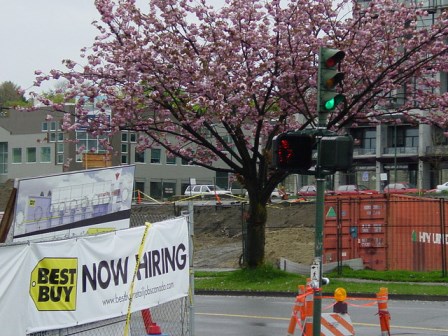The August jobs report was disappointing indeed, missing estimates by a whopping 83,000.

Last month employers added the fewest jobs in eight months, the U.S. Department of Labor reported Friday.
Payrolls increased by an uninspiring 142,000 in August, handily missing the median forecast for an increase of 230,000. The number also missed by a wide margin even the lowest projections; economists' estimates ranged from increases of 190,000 to 310,000 after July's 209,000 gain.
August's dreary new job tally ended a five-month streak of payroll gains of more than 200,000. Before August's lackluster report, the United States had averaged 209,000 new monthly jobs over the past year.
The unemployment rate last month dipped to 6.1% from 6.2% - but only because the labor force participation rate shrank further.
"After two fairly decent employment reports, the August report raises concerns again about the labor market and U.S. economic recovery," Steven Pressman, professor of economics and finance at Monmouth University in Long Branch, N.J., told Money Morning.
"The 142,000 headline number from the business survey was the worst performance in many months," Pressman continued. "The numbers from the household survey were considerably worse, showing employment increased by only 16,000 in August. Moreover, the unemployment rate fell by a small fraction only because people stopped looking for jobs."
Even more worrisome than the headline number, Pressman said, is where job growth continues to be weak - and what that portends for the future. "Slow job growth persists in sectors that should be leading an economic recovery and showing the largest job gains amid a recovery."
Following are a dozen key takeaways from the weak-showing August jobs report.
12 Highlights from the Uninspiring August Jobs Report
- Private businesses added 134,000 jobs in August, down from 213,000 in July. The August number marked the smallest gain of the year from the private sector.
- Employment in other major industries, including mining and logging, wholesale trade, transportation and warehousing, information, financial activities, and government, showed little change over the month.
- Manufacturing employment stalled in August. After an increase of 28,000 in July, job gains in the sector remained unchanged last month.
- Retail employment lost 8,000 jobs in August. Last month's sharp decline from the retail sector worries Pressman that consumers are cutting back on spending. "The August retail sales data gets released in one week. I expect to start losing sleep over this number towards the middle of next week," Pressman shared.
- Federal, state, and local governments added 8,000 jobs.
- Construction companies added 20,000 workers, well below the 31,000 added in July. The U.S. economy is short more than 1 million construction jobs compared to mid-2000s levels, Pressman explained. The August slowdown in construction jobs is consistent with the decline in new home sales (from 454,000 in May to 412,000 in July). "Falling sales can only lead to a slowdown in home construction and in construction jobs," Pressman said.
- The average workweek for all employees in August remained unchanged for the sixth consecutive month at 34.5 hours.
- Hourly earnings eked up a paltry $0.06, or 2.1%, to $24.53 in August from $24.47 in July. Analysts were expecting wage growth of 2.4%. Slow-growing wages have tempered consumer spending, which accounts for 70% of the economy, and is a key concern for U.S. Federal Reserve Chairwoman Janet Yellen. The Fed Chief has said wages could continue to be held down by a big shadow supply of workers, including part-timers vying for full-time work. Median U.S. hourly wages in the first half of 2014 were $16.59, down 0.9% in the past year when factoring in inflation, according to an August study from the Economic Policy Institute.
- The labor participation rate, which reflects the share of working-age people in the labor force and those actively seeking a job in the last four weeks, dipped to 62.8% from 62.9% in July, a 36-year low. In December 2007, when the recession began, the rate was 66%. Its peak was just above 67% in 1999.
- The underemployment rate, which includes part-time workers who'd prefer full-time work and discouraged individuals who have simply given up looking for a position, ticked down a tad from 12.2% to a still-elevated 12%.
- The tally of long-term unemployed, those out of work for 27 weeks or longer, was 2.96 million. The long-term unemployed still make up 31% of all jobless individuals.
- Job gains for June and July were revised down by a cumulative 28,000. June's was revised to 267,000 from 298,000. July's, meanwhile, was revised from 209,000 to 212,000.
Pressman said one silver lining in August's dispiriting job report is that it should give Yellen reason to hold off on raising interest rates anytime soon and will also garner her some support for this position at the Fed.
Without question, no figure looms larger than the jobs number as the Fed mulls an interest rate hike - and the August jobs report left much to be desired indeed.
Don't Miss Today's Top Investing Story: Palladium is up almost 14% since we recommended it in March. Now there's another often-overlooked precious metal that's headed for a bull run. In fact, it's one of the best precious metals to buy before 2015...
Related Articles:
- CNN Money: Whoops! Jobs Recovery Lost Steam in August
- The New York Times: U.S. Job Growth Slips in August After Months of Bigger Gains


